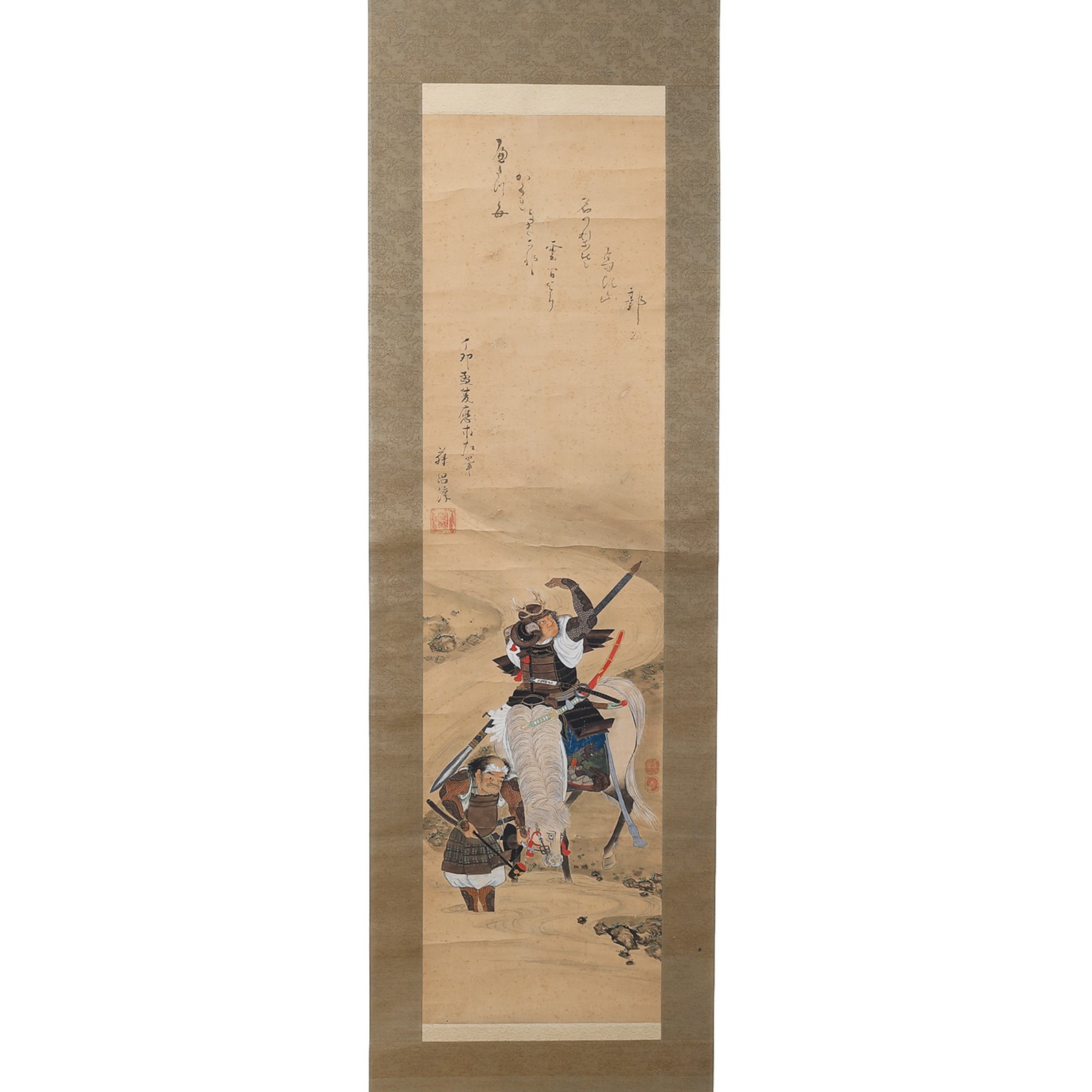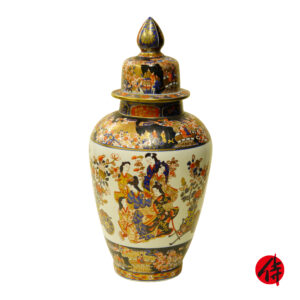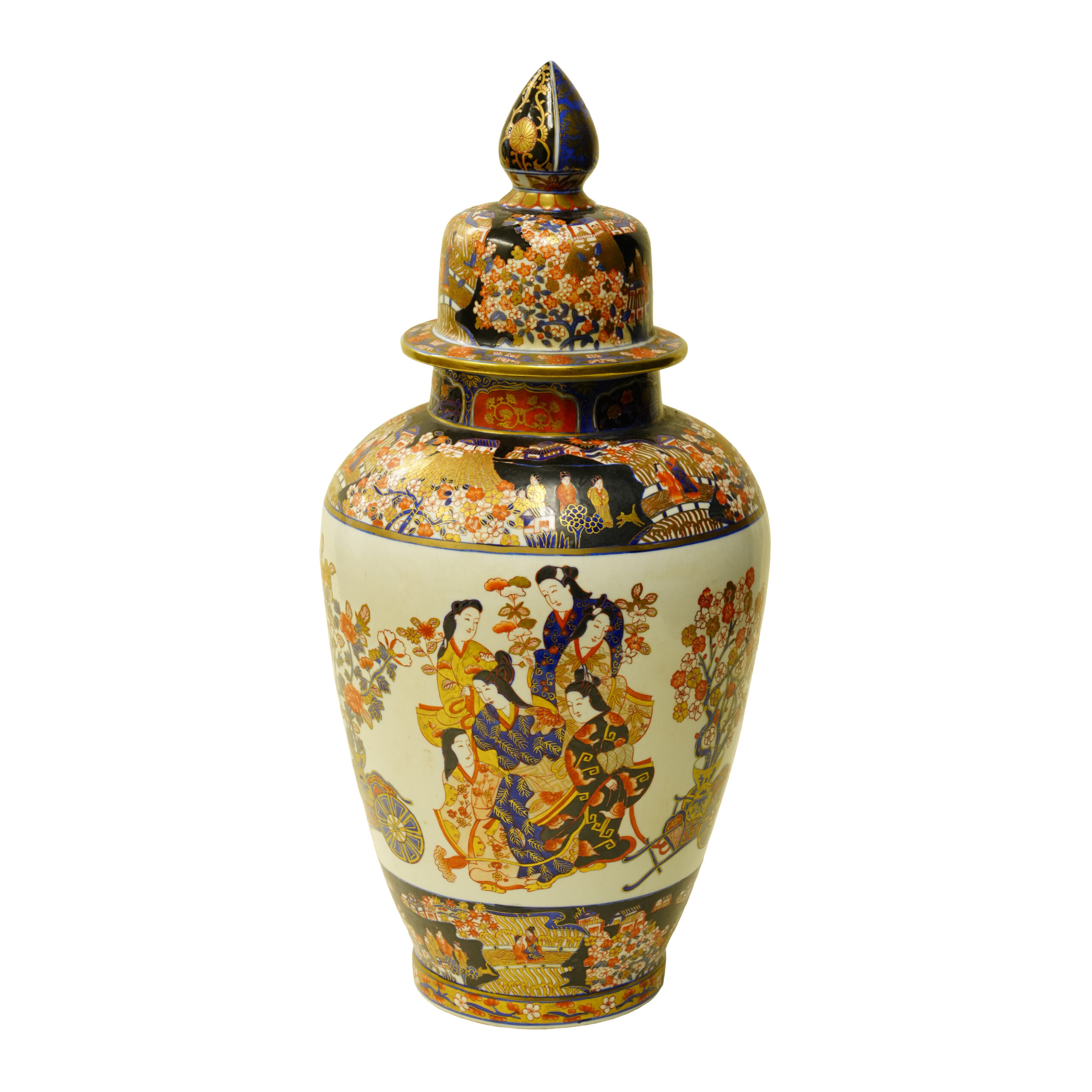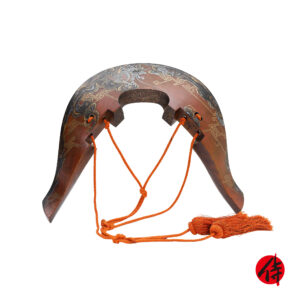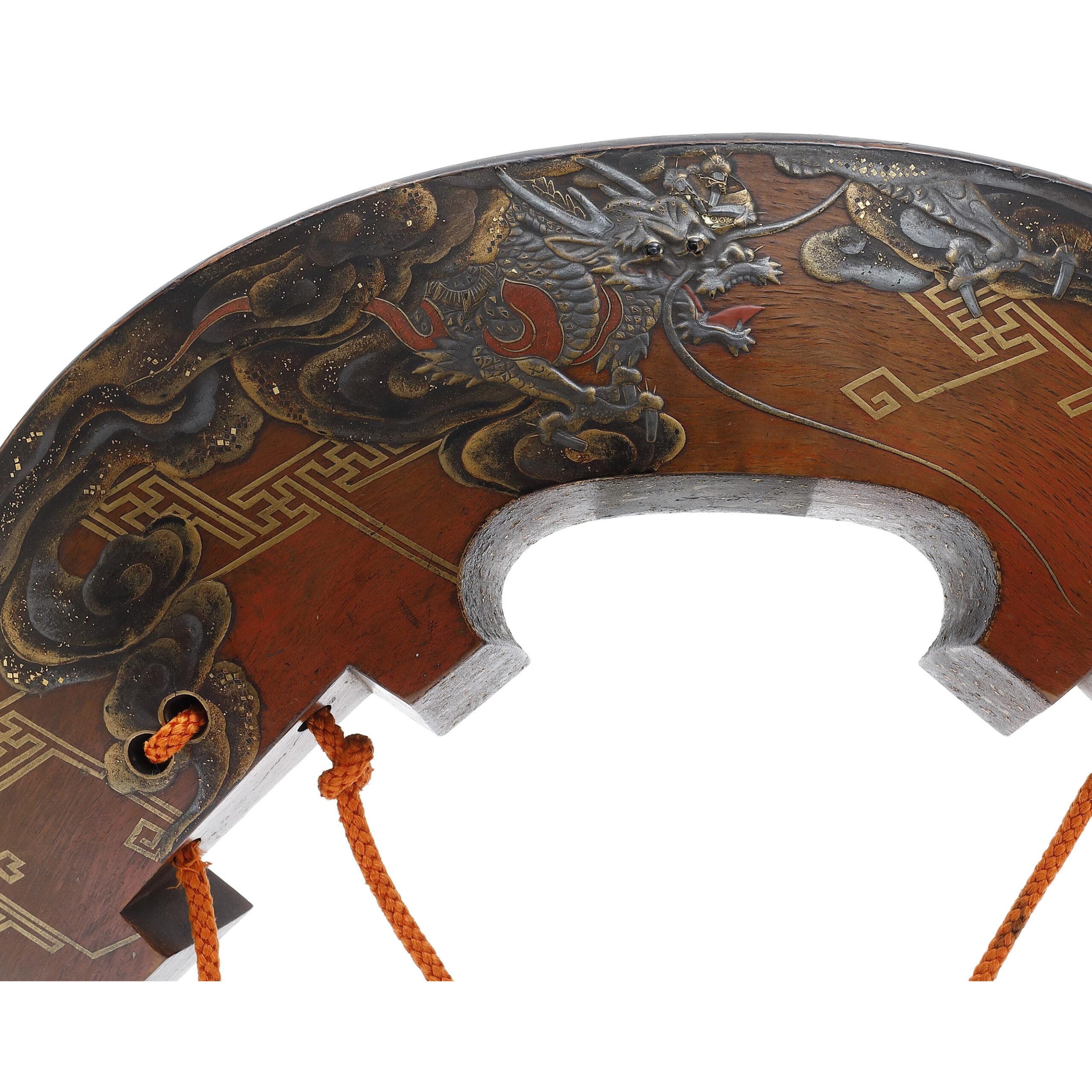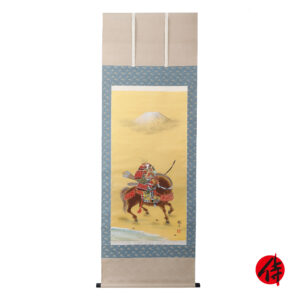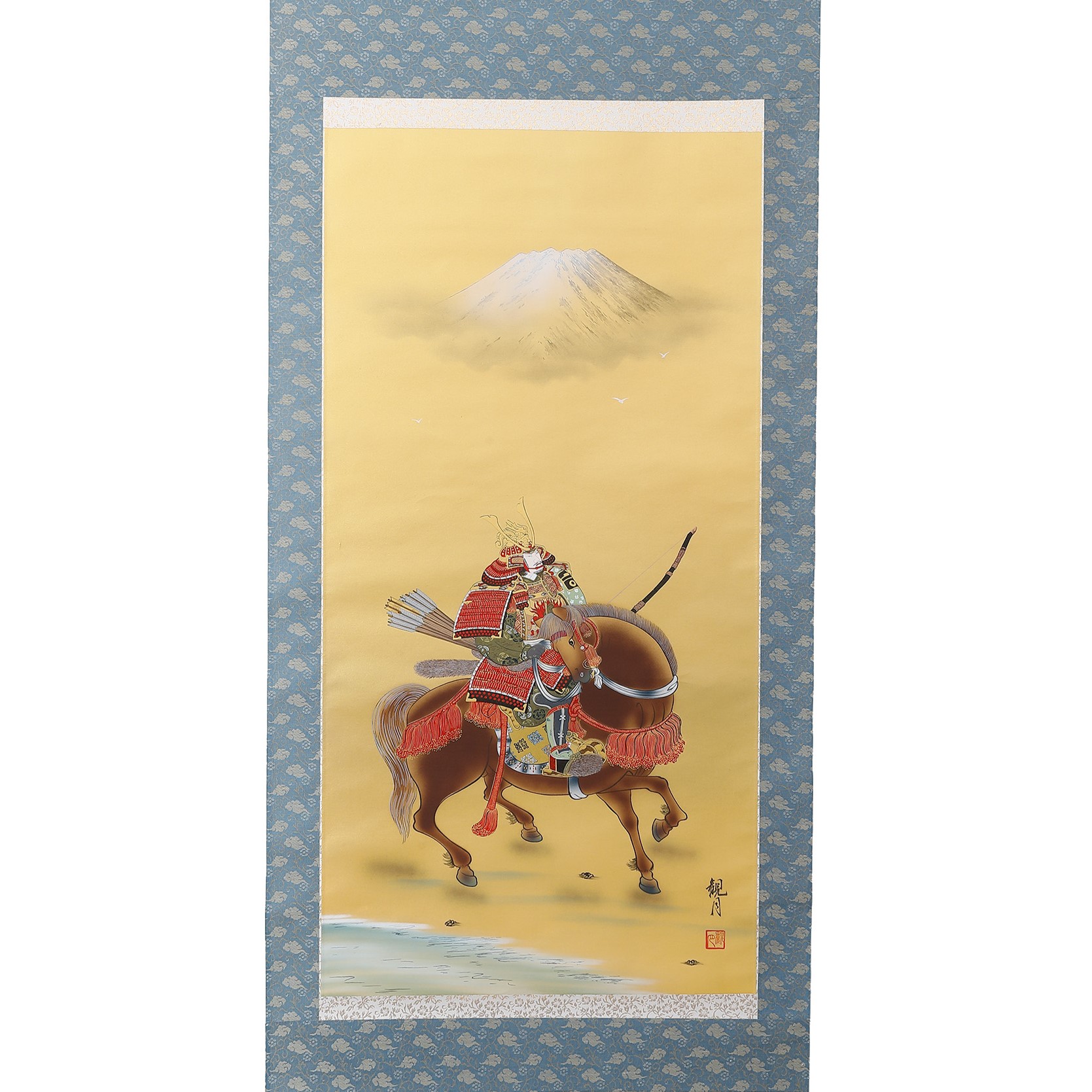Title: Bajo Musha Zu
Description
This item is a Kakejiku (掛軸, hanging scroll). When displaying a hanging scroll in a Japanese-style room, it is generally hung on the wall of the Tokonoma (床の間). However, no etiquette says you cannot hang a hanging scroll anywhere other than in Tokonoma or a Japanese-style room. You could enjoy them regardless of where you display them. You could also create an alcove-like space by simply hanging a scroll out of direct sunlight, laying tatami mats under it, and placing Japanese miscellaneous goods and flower arrangements. A Tokonoma is a space in a Japanese-style room where the floor is one step higher than the rest of the room. It was initially thought to be a place where gods resided and was created as a space for people of high status to sit. Since the Edo period, Tokonomas have been created in ordinary houses as a place for guests (high-status people) to sit, and it is considered the most sacred and noble place in a Japanese-style room. In recent years, it has often been set up as a space for art exhibitions, such as hanging scrolls and displaying flowers and ornaments.
Especially this hanging scroll seems to have been the one that was hung in the season of Tango no Sekku (端午の節句). The Tango-no Sekku (端午の節句) is one of the seasonal festivals and generally regarded as the Boy’s Festival. It is said that the Tango-no Sekku comes from the Continent. Since the Muromachi period (1336-1658), there has been a custom in which some kind of items, such as a hanging scroll depicting a Samurai or Samurai armors, were displayed in the hope of boys growing up well and succeeding. This type of design, a Samurai riding a horse, has been said to ward off evil spirits.
Regarding the design, a Samurai riding on a horse, which is called Bajo (馬上, on a horse) Musha (武者, Samurai worrier), with his attendant giving the horse water in the river is depicted. Judging from the luxurious armor of the Samurai, he seems to be of high rank. Also, he has a large spear (槍, Yari) in his right hand. The spear was a weapon with a long handle and a sharp tip, and unlike the Katana, which exceled at slashing, the spear exceled at thrusting. Some spears were specialized for piercing through enemy armor in close combat. The armor-piercing feature was common in spears made from the Sengoku period to the early Edo period (16th to early 17th century).
In addition, if you look at the Kabuto (兜, helmet) the Samurai is wearing, you can see something similar to deer antlers. Deer have long been regarded as messengers of the gods and valued, and it is said that even famous military commanders such as Sanada Yukimura (真田幸村) were fond of using such a helmet front decoration with a motif of deer antlers. Deer antlers have also been believed to possess mystical powers.
Along with the elegant appearance of the white horse, there is an atmosphere of bravery and grace on this hanging scroll.
*As this item is an antique, please check each photo and ensure its condition.
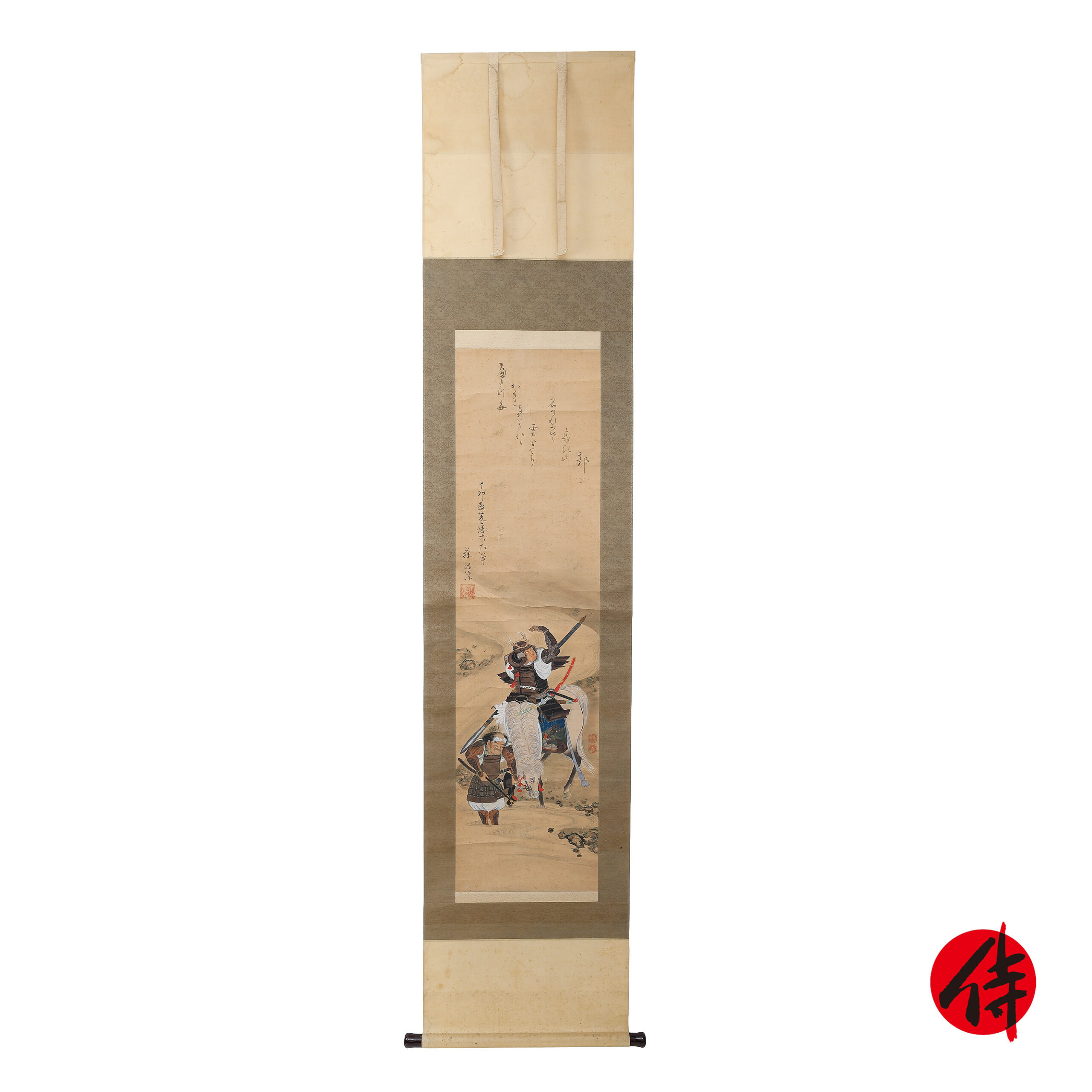
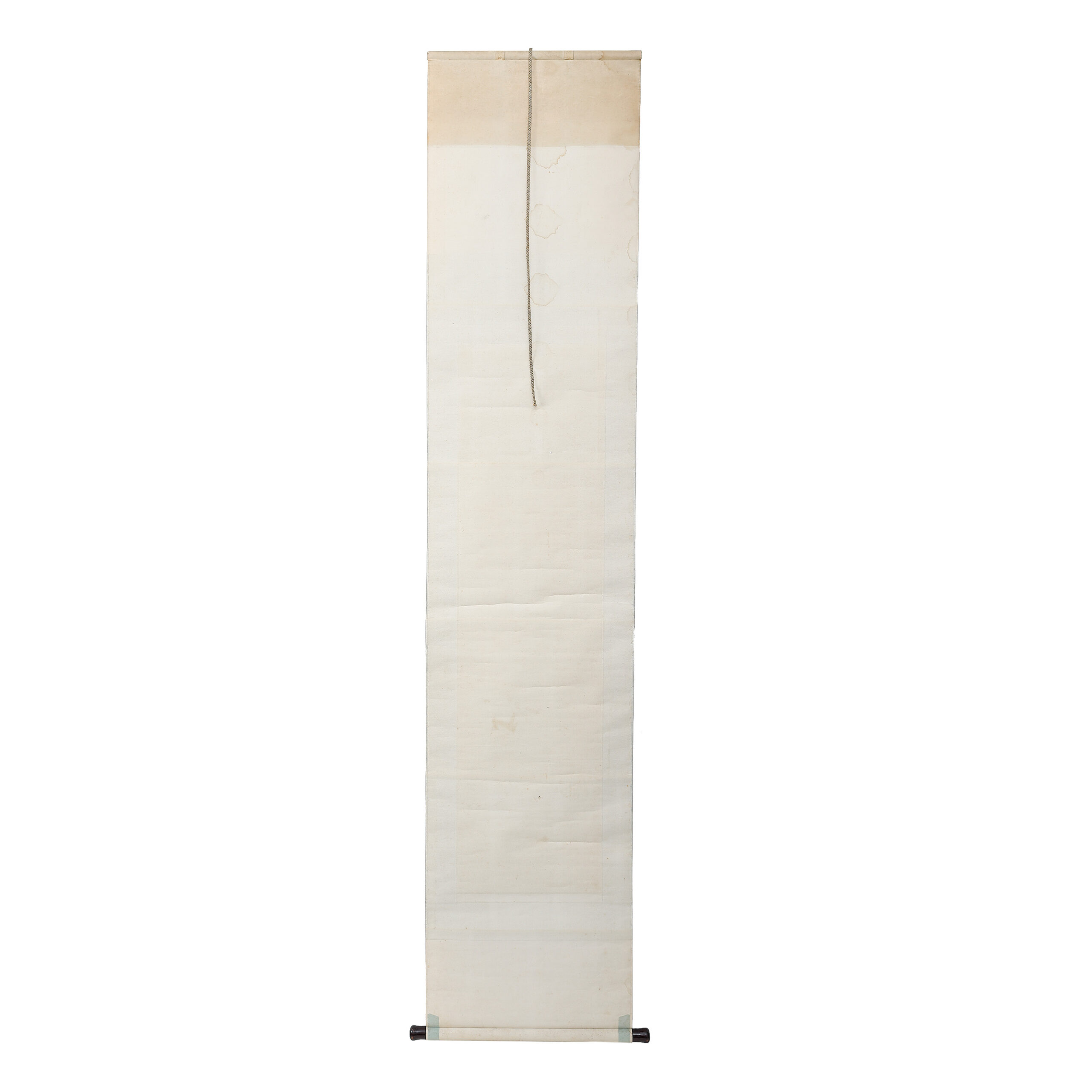
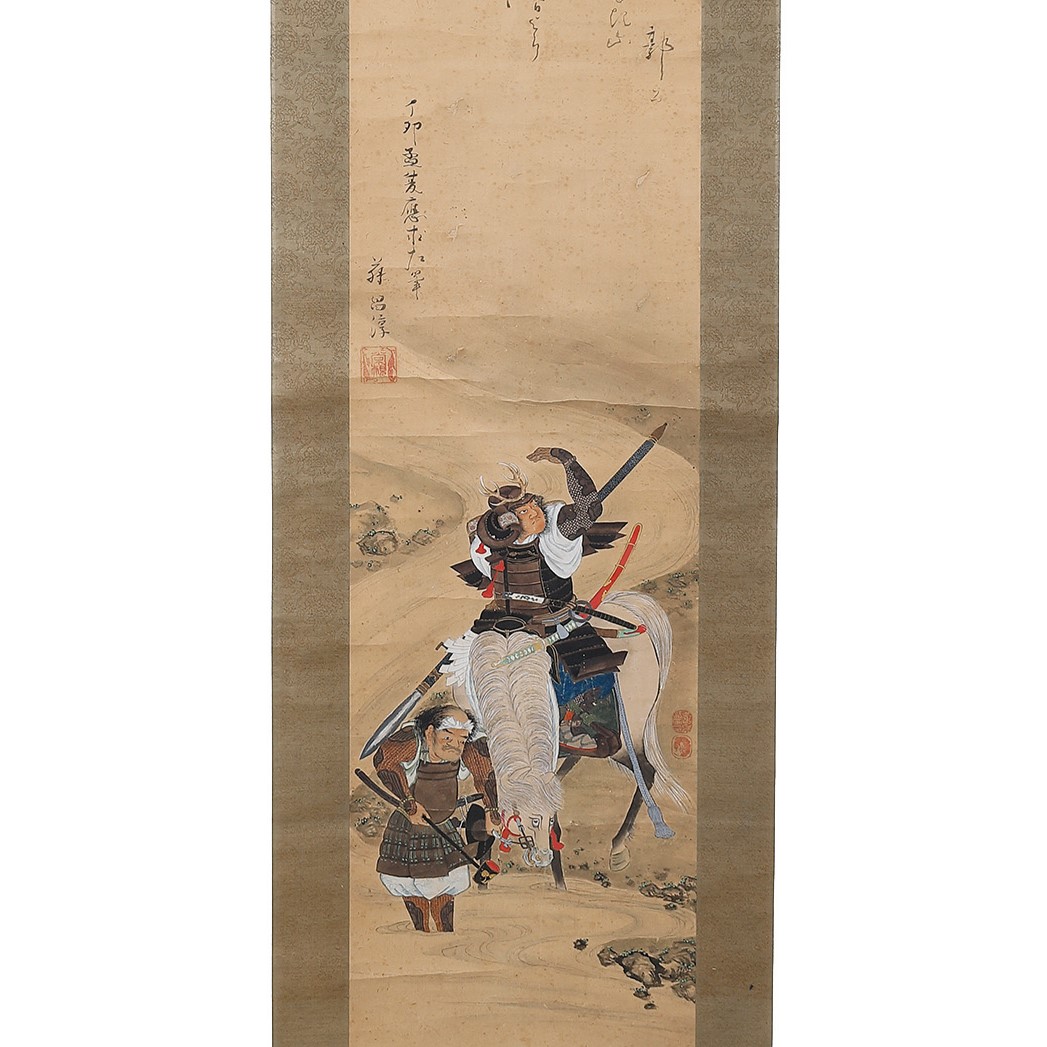
Example of how to decorate a hanging scroll
This image is an example of how to decorate a hanging scroll. Please note that the hanging scroll in this photo differs from the actual item. Hanging scrolls are an interior decoration that could be enjoyed by changing them according to the seasons. We hope you find your favorite designed hanging scroll and enjoy decorating your room with your great collection.

【About us】
Samurai Museum is located in Tokyo, Japan, exhibiting antique artifacts related to the Samurai history. Samurai Museum Shop is the place for those who are interested in Japanese culture and craftsmanship. We deal with antique Samurai swords/armor, traditional crafts made in Japan and so on.
【Payment method】
We accept payment through Stripe (Credit card), PayPal, Apple Pay or ChromePay, all of which are secure payment methods. Also, you don’t need to make an account on Stripe for the checkout. If you prefer other payment method, please contact us. You may either pay in JPY, USD, AUD, CAD, EUR, CHF or GBP. The price is set in Japanese Yen. Prices in other currencies are automatically calculated based on the latest exchange rate.

【Shipping duration】
We normally ship via EMS (Express Mail Service) provided by Japan Post. It usually takes at least 5-14 days to deliver the package after you place an order. Time of delivery is estimated as accurately as possible by the carrier but does not take into account any delays beyond our control such as by inclement weather, post office holiday seasons.
We offer Free International Shipping as long as we can ship your order by EMS. If you prefer other shipping carriers, please contact us.
We will inform you of the order’s tracking number via email. Please make sure you fill out your valid email address correctly.
*If you like to make sure if EMS shipping is available to your country, please contact us.

【How to make sure the condition】
Please keep in mind that what you are going to purchase is an antique item. We uploaded high resolution photos for you to check its condition thoroughly. If you like to see more photos with different angles, please feel free to contact us. We will be happy to send them to you so that you can make informed decision.
It is essential for us to know that you are happy with your choice of antique item and we are prepared to use the best of our ability to serve you.
Would you like see some more antique items for sale? Please check the link below. We hope you can find your favorite item.
https://www.samuraimuseum.jp/shop/product-category/antique/
